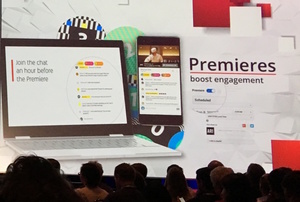Facebook Takes A Swipe At YouTube, And YouTube Swipes Back
 Facebook has been aiming for YouTube ever since it introduced video a few years ago, and although it’s done an admirable job of becoming a viable video platform, it’s efforts seemed to have plateaued as serious content creators still prefer the Google subsidiary. That isn’t keeping Facebook from trying something new however, and it’s using Instagram to do it.
Facebook has been aiming for YouTube ever since it introduced video a few years ago, and although it’s done an admirable job of becoming a viable video platform, it’s efforts seemed to have plateaued as serious content creators still prefer the Google subsidiary. That isn’t keeping Facebook from trying something new however, and it’s using Instagram to do it.
Instagram, which is owned by Facebook, introduced long-form videos on the platform recently, hoping to enhance the benefits to its current creators and bleed off a few from YouTube in the process. Now YouTube has shot back with a number of new tools to help its major users generate income, which ups the ante for Facebook once again.
Instagram’s introduction of its IGTV service raises the time limit on videos from 1 to 10 minutes, or even pushes them to as long as an hour for users with large subscriber bases. The big problem is that, like Facebook, there’s no clear path to monetizing the content as currently there’s no advertising on the service. Say what you will about YouTube and its many foibles, at least content creators get paid.
And now there are more ways than ever for YouTube creators to earn money with the service’s just announced three latest features which are bound to make content creators happy. The first is channel memberships, which gives fans the ability to sponsor a channel for $4.99 per month. The second is the ability to sell fans over 20 different merchandise items directly from YouTube. Last is a feature called “Premieres” that allows creators to promote a video ahead of its release via a landing page.
The implications of these new Instagram and Facebook features for artists and labels alike may be substantial.
Even though on the surface YouTube seems to have won this round based on its direct merch sales feature alone, Instagram’s new IGTV can allow an artist to reach a whole new audience, since the platform is so popular with the main demographic of popular music consumers. What some may consider a downside is that it’s designed exclusively for mobile and presents its video in a vertical format, so it won’t be the place to premier your new music video unless you reformat it for the platform. That said, the ability to get in front of the now 1 billion users per month (according to Instagram’s latest figures) is attractive.
On the other hand, YouTube is giving artists and labels more ways to earn money than before, and as a bonus, it’s taking less of a cut than in the past. The service has gotten a lot of flack for its 55/45 royalty split (55% to the artist/label), but it’s being a lot more generous with its channel memberships, retreating to a more or less industry standard of 70/30 (70% to the artist/label).
The direct merchandise sales on YouTube is in partnership with Teespring, and looks like its about a 50/50 split between the company and the channel owner with the margin increasing as the sales increase. YouTube is said to take a flat percentage commission on the sale from Teespring.
All this is good news for creators in general and especially for the music industry. Video content of all types is still growing in popularity, and any new ways to promote and monetize it is always most welcomed.


